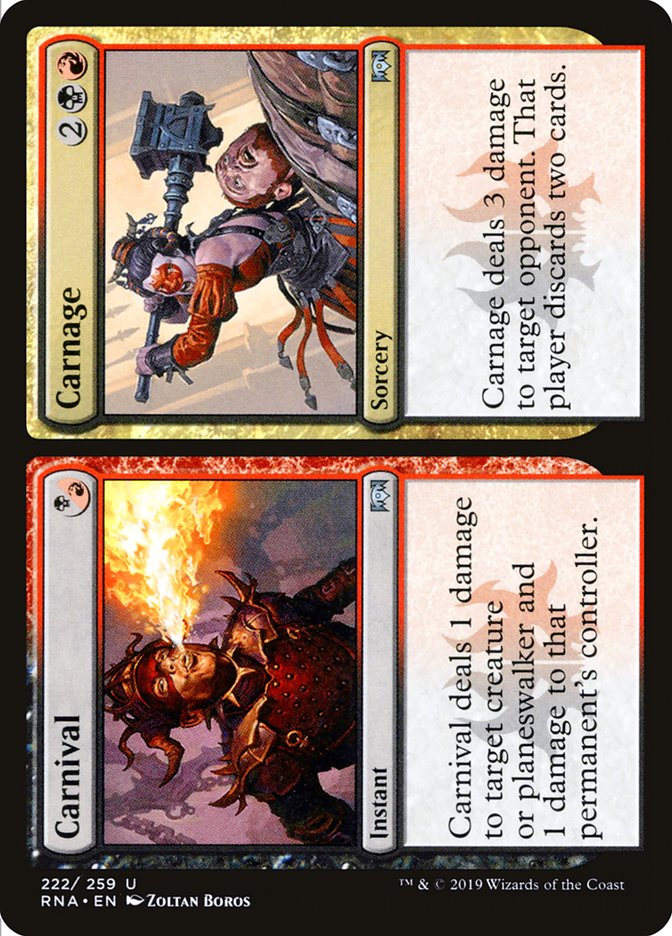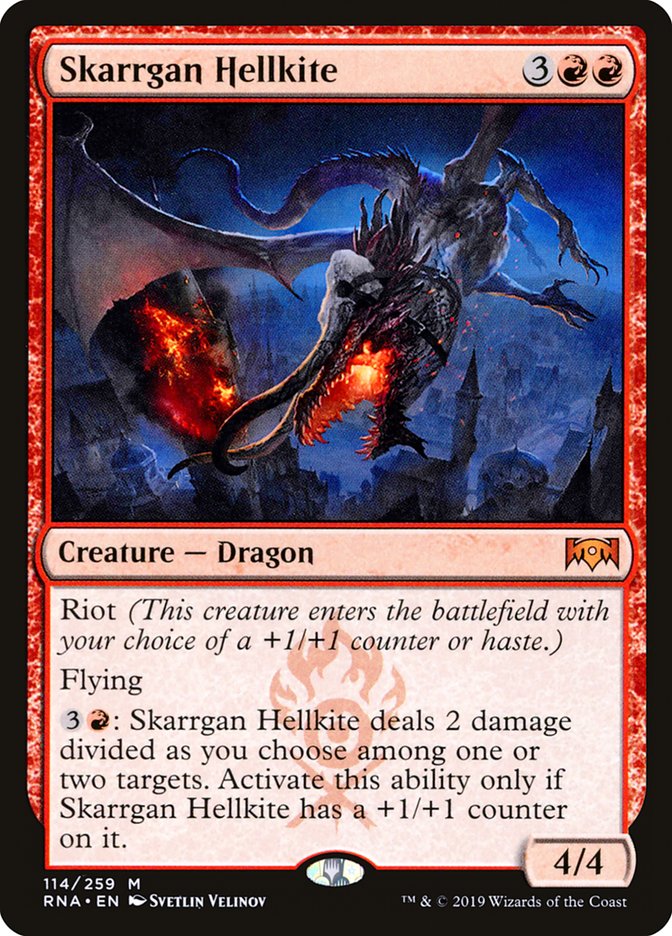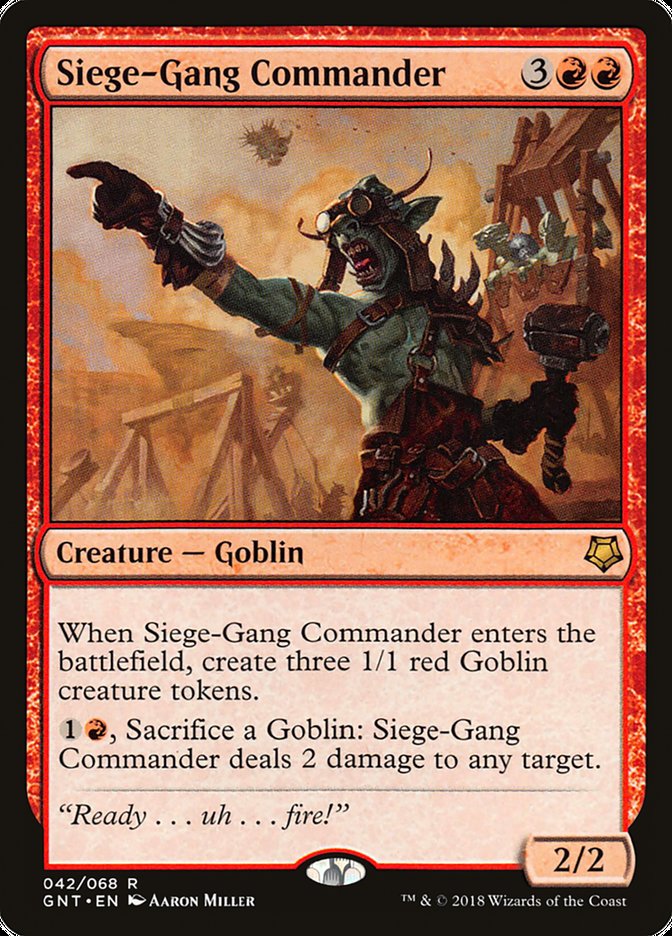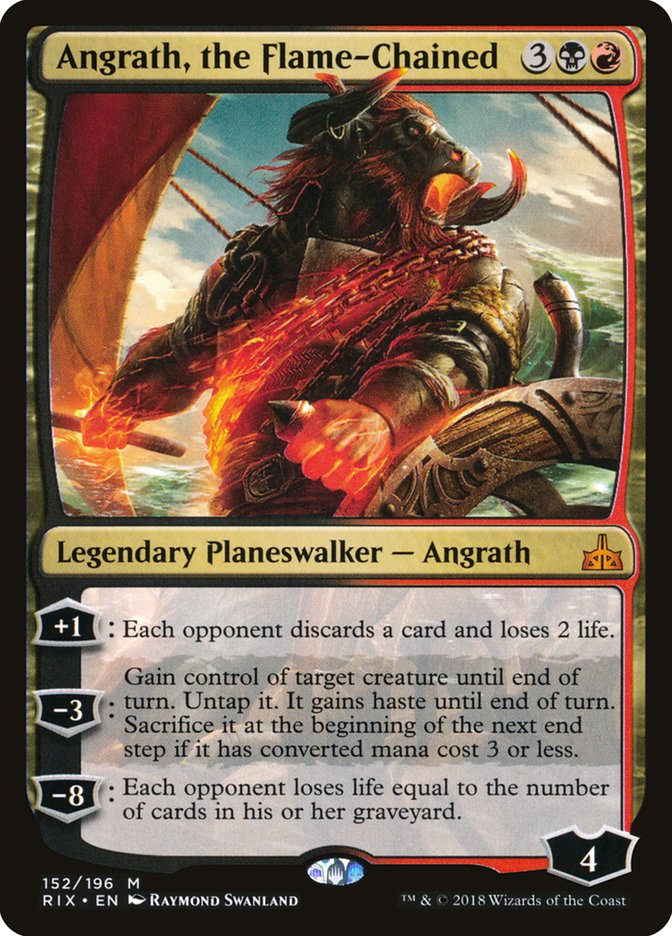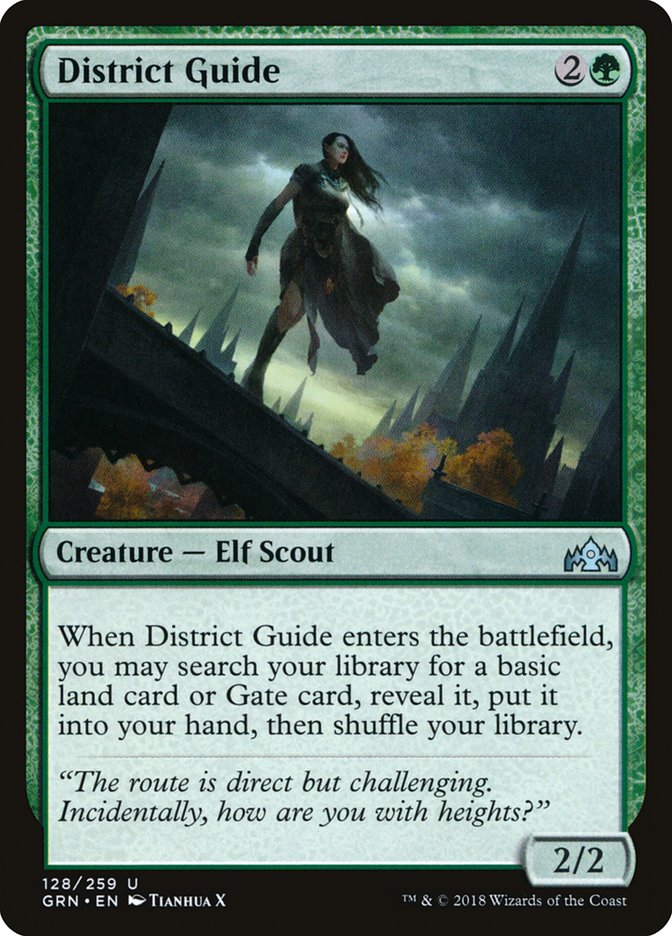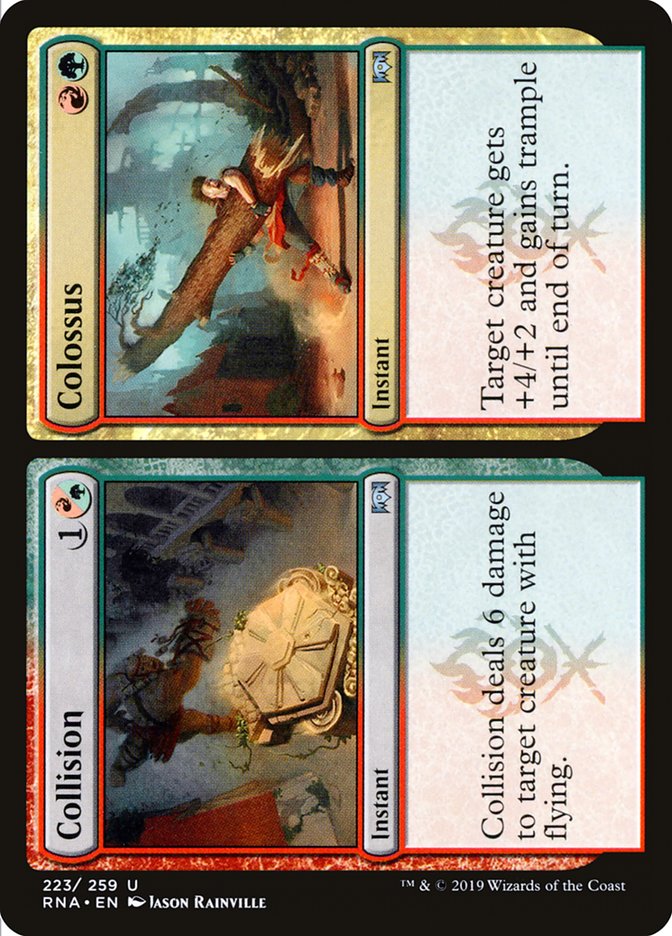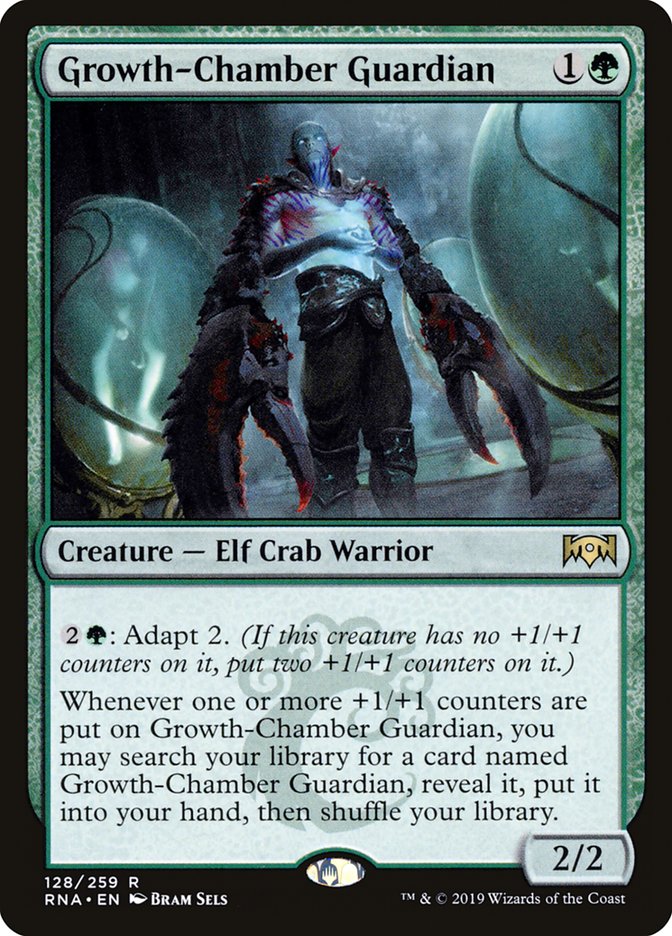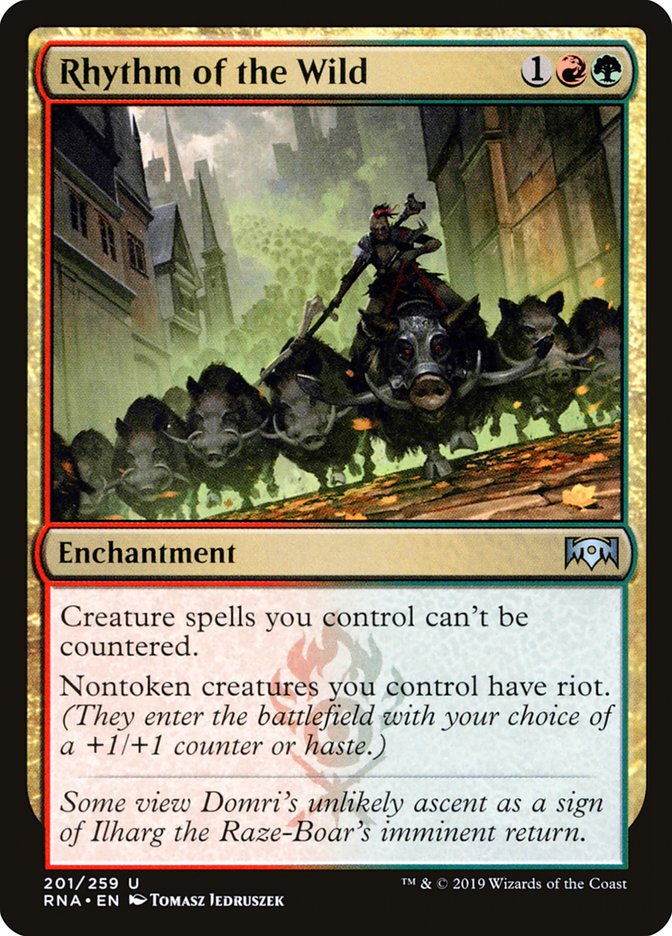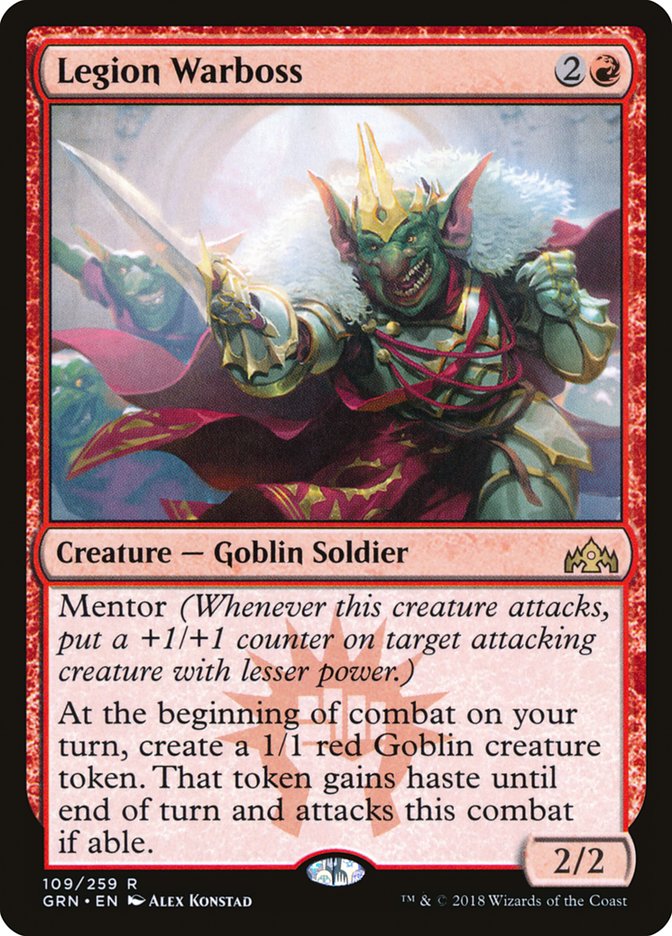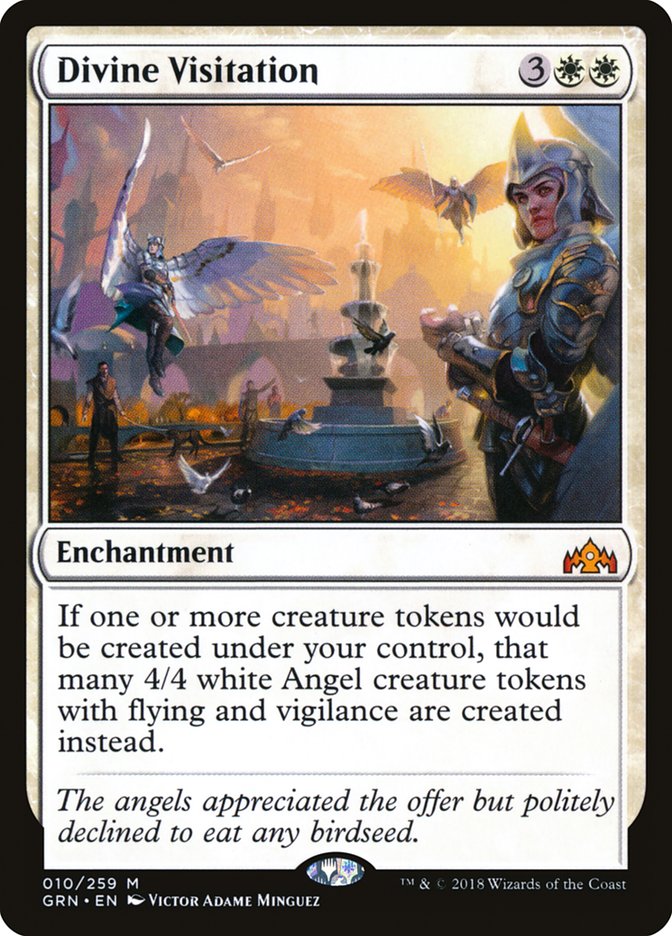After two Standard Opens and a Team Constructed Open, Ravnica Allegiance Standard is starting to take shape. In the first few weeks, Sultai Midrange was the deck to beat. It gave midrange players the ability to go super-long with Hydroid Krasis on the top-end. As people found new ways to reduce the impact of Hydroid Krasis, other decks started to rise up in place of Sultai Midrange. But as we continue the carousel of “best deck” each week, it’s possible we’re starting to forget some potent archetypes that could be well-positioned.
This week, we’ll look at three archetypes I think could make a big splash in Standard. And with multiple important Standard tournaments on the horizon, familiarizing yourself with these decks could prepare you for playing against them, or potentially give you a new tool to help conquer your local Standard metagame.
Building a Better Goblin Chainwhirler
In recent weeks, the value of Goblin Chainwhirler has started to diminish a bit. With Esper Control and Sultai Midrange at the top of the field, the ability to sweep up small creatures hasn’t really been all that important. But with Azorius Aggro and Mono-Blue Aggro on the rise, Goblin Chainwhirler should be ready to make a comeback.
But one thing I’ve been curious about is why we haven’t seen Goblin Chainwhirler alongside Status // Statue since Ross and I were testing in on VS Live! a few weeks ago. Outside of it being useless against Esper Control and Wilderness Reclamation strategies, Status plus Goblin Chainwhirler seems like a potent combination. Couple that with how both Goblin Chainwhirler and Statue are reasonable cards to cast by themselves and you have a winning recipe. All we must figure out is whether or not the rest of the deck is viable.
Creatures (12)
Lands (21)
Spells (27)

Jody Keith proved that it was certainly a contender in this format. I watched a lot of his matches this past weekend, both in the booth and in the feature match area, and his deck was certainly impressive. Cards like Dire Fleet Daredevil and Lava Coil are exceptional against Izzet Drakes, while Treasure Map and Rekindling Phoenix are particularly good at helping you win longer games.
So when your creatures are solid and your removal is great, the only real question is, “What are you bad against?” Well, it seemed like Wilderness Reclamation was Jody’s undoing, as John Johnson’s Simic Nexus deck easily dispatched him in the quarterfinals of SCG Dallas. Duress is a fine interaction point, but it just wasn’t enough. Can adding another angle to your deck help out in this matchup without hurting your chances too much against everything else?
Creatures (18)
- 4 Rekindling Phoenix
- 2 Dire Fleet Daredevil
- 4 Goblin Chainwhirler
- 4 Rix Maadi Reveler
- 4 Skarrgan Hellkite
Planeswalkers (2)
Lands (25)
Spells (15)
Sideboard

As far as sideboard plans are concerned, Jody lacked a way to truly hammer the Wilderness Reclamation decks. Cindervines taxes their life total if they start comboing off, while you can still just use it to kill a Wilderness Reclamation for three mana. Having proactive sideboard cards that punish your opponent while still playing an important role later in the game is a huge upgrade.
As someone who regularly plays Wilderness Reclamation, Cindervines is an absolute nightmare when combined with some attacking creatures.
This is one of the better updates to the archetype that Jody thought of, if only because modal effects are at their best in decks that already play a bunch of efficient removal. Replacing Shock with Carnival is very good in some situations. Having the ability to hit your opponent with discard or just deal them three direct damage is huge in a lot of spots.
Many of the creatures that die to Shock will also die to Carnival, which is why we’re following Jody’s example and playing a split.
I think Siege-Gang Commander is one heck of a card, but I’ve been impressed by Skarrgan Hellkite on more than one occasion. Haste can be particularly useful when your opponent doesn’t have creatures to kill, but having another way to abuse Status is also ideal. You want all your cards to work well together in various ways while maintaining some strength autonomously. The trick for Standard decks in the last few years has been making sure your cards do exactly this. You want some amount of synergy, but too much means a bit of disruption can collapse your functionality. As a result, modality is always preferable, and split cards have become the essence of that mantra.
While Siege-Gang Commander is quite good and functions well through spot removal, I think Skarrgan Hellkite is just slightly better. Your opponent’s removal will likely be taxed by Rekindling Phoenix, so I want the follow up to absolutely crush them.
Agrath, the Flame-Chained is quite possibly my favorite card in Standard outside of the Wilderness Reclamation decks I’ve been working on. Not only is this card insanely powerful, it’s also relatively unexplored. It also doubles as a way to completely wreck an opponent who shoves on Hydroid Krasis, giving you large bursts of damage that also eliminate the threat completely.
Angrath, the Flame-Chained is potentially the second-best planeswalker in Standard, but it just so happens to fall into a relatively unexplored color combination. Rakdos decks are great at killing creatures but suffer from being one-dimensional. Traditionally, the best color pairings are (Base) + (support) with the base color containing threats and support color specializing in removal. (Red) + (black) features two colors that are generally good at killing creatures yet struggle with putting up great threats. On occasion, a color combination will transcend this limitation, but you can get my drift. Plus, it doesn’t help that Rakdos is the only color combination that can’t get a Wilderness Reclamation off the battlefield.
Regardless, Angrath, the Flame-Chained is perfect for this deck, and has been so good for me that I’m considering splashing it in virtually all the red and black decks I’m currently playing.
Gruul Monsters
Continuing with our aggressively slanted midrange strategies, let’s take a look at another virtually unexplored archetype: Gruul Monsters.
Creatures (26)
- 4 Llanowar Elves
- 4 Rekindling Phoenix
- 4 District Guide
- 2 Kraul Harpooner
- 4 Gruul Spellbreaker
- 4 Skarrgan Hellkite
- 4 Growth-Chamber Guardian
Lands (24)
Spells (10)
Sideboard

When we first began testing with Ravnica Allegiance, Rhythm of the Wild was one of the cards that impressed us. However, it became clear over time that it shouldn’t be the focal point of the deck. If it is, you’ll likely run into the problem where the rest of your cards aren’t nearly as good once it’s on the battlefield. It’s also a bit awkward when you pair it with creatures that already have riot, as it eliminates the possibility of pairing two strategies into one powerful combination. As you can see with Growth-Chamber Guardian, pairing Simic with Gruul can do some marvelous things.
As a result, many of the 5-0 Standard lists featuring the Gruul archetype were hyper-focused on being lower to the ground, and in turn moved away from Rhythm of the Wild. But I don’t want to do that. I want to go just a bit bigger than normal so I can hammer these midrange decks when their shields are down while also sitting right on top of the smaller aggressive decks.
There are some similar elements and tools in this deck as there were in the Status Red deck, so I won’t double up on why they’re good, but just know that there’s a reason why Lava Coil, Cindervines, and Skarrgan Hellkite are in both lists.
With multiple ways to use excess mana, District Guide is a great card in this archetype. Since we aren’t playing Wildgrowth Walker, cards like Jadelight Ranger and Merfolk Branchwalker are weaker than normal. Additionally, those two creatures don’t help us hit red mana. District Guide shines when you’re playing a two-color deck with heavy requirements on the “splash” color. At the top end, I prefer Rekindling Phoenix and Skarrgan Hellkite, both of which require two red mana. That makes District Guide the optimal choice here.
The body on District Guide also isn’t too bad here, as it can apply pressure to the slower decks while still giving me a more consistent draw. And with Rhythm of the Wild, giving it haste or a +1/+1 counter makes it significantly better than it “should” be.
One of the cooler cards in the deck, Collision gives you answers to opposing fliers like Enigma Drake and Tempest Djinn. And against decks where killing a flying creature is irrelevant, you get a powerful combat trick that doubles as a Boros Charm when your opponent’s shields are down. In this format more than previous ones, players tend to tap out on the regular. That means combat tricks like Integrity or Colossus can be quite effective. The burst damage provided by Colossus can also steal games out of nowhere.
I don’t want to put too much time and effort into making Rhythm of the Wild “work,” but it does turn Growth-Chamber Guardian into an incredible burst of pressure while giving you a fairly busted effect.
What is most important about these two cards is that neither is integral to your deck’s functionality, yet both help you in extremely different ways. On top of that, when you pair these two together, your deck goes into overdrive. And as we discussed before, it’s very important that all your cards can function alone. When you start playing cards that are weak without their counterpart(s) or have your entire deck hinge around one or two cards, a single piece of interaction like Thought Erasure can break you.
I’m not in love with Rhythm of the Wild or Growth-Chamber Guardian, but I understand that both can be insanely powerful in wildly different circumstances, and both can be mediocre when your draw doesn’t line up.
Who’s the Warboss?
This last deck is a bit of a fun deck but still has a lot going for it. And one card that I think really needs some more exploration is Divine Visitation.
Creatures (16)
Lands (24)
Spells (20)

Based on a recent Magic Online list by user Ruiner, this take on Boros Aggro is a little bit bigger than normal white-based aggressive decks. Instead of relying on a ton of cheap creatures to get the job done, we get to insulate ourselves from sweeper effects by playing more of the resilient two-drop creatures and Heroic Reinforcements.
Legion Warboss is my pick for one of the better threats in the format. I think it usually suffers from the same problem as Thief of Sanity in that most players have a ton of removal in the first game, and it shines when your opponent sideboards most of it out. However, in this deck, we can actually overload our opponent’s removal a lot of the time. And thanks to Tithe Taker, our opponent is obligated to interact with us at sorcery speed, which in turn makes Legion Warboss far more likely to create a goblin token before it dies.
Legion Warboss is also pretty good alongside the deck’s marquee card:
While you aren’t all that flexible, Divine Visitation essentially turbo-charges most of the cards in your deck. Afterlife? How about a 4/4. Legion Warboss? How about a 4/4 with haste! Like Rhythm of the Wild, Divine Visitation can be mediocre when your opponent kills all your creatures or you flood out a bit. But the first time your Legion’s Landing makes an Angel, you’ll know exactly why it’s in the deck.
I’m a bit wary of playing this style of deck for a few reasons, but I do think it’s worth exploring as an archetype.
1. Legion’s Landing is difficult to transform, as we aren’t flooding the battlefield with one-drop creatures.
2. Divine Visitation is a bit worse when everyone is already preparing to beat Wilderness Reclamation.
3. The sideboard plan probably needs a lot of work, as your deck can’t really do the “transformational sideboard” thing, while basically every other deck in the format can do just that.
4. The lack of one-drop creatures means we can’t really play the powerful convoke cards like Conclave Tribunal, though the maindeck Tocatli Honor Guard is obviously one major reason not to play Venerated Loxodon.
Overall, I doubt this particular iteration is viable in the current metagame, but I do think there’s potential for a “Boros Angels” style of deck to punch through. Tithe Taker and Adanto Vanguard are still good, and Legion Warboss is quite possibly the most underrated creature in the format. And while some people have been trying to bring the archetype back by splashing black for Mortify and Seraph of the Scales, I don’t think black as a third color gives you enough of a punch for the splash. Every time you add a color to your deck, you risk more lands entering the battlefield tapped or dealing you more damage. At all times, you should be asking yourself, “Is it worth it?”
***
Standard is in a great place right now. With six different archetypes in the most recent Top 8, as well as variation within each color combination and archetype, it feels as if every deck is powerful as well as flexible. And for someone who really likes tinkering within archetypes to make my deck better, as opposed to jumping between archetypes each week, the last four months or so have been paradise. I’m looking forward to brewing more, and exploring more, but the Mythic Championship next week should give us all a lot more information about what the best decks (and best versions of each deck) in Standard are.
And with Magic Arena thriving, as well as the MPL supporting a bevy of streamers, the future of Standard (and Magic) is brighter than ever.


